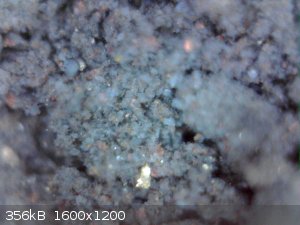
Swinfi2 - 26-1-2020 at 08:55
No harm done to myself or any equipment but hopefully someone else will avoid an accident.
I was drying some fine electrolytic copper powder, fine enough it would form a suspension in water for about a day. It was made by electrolysis of
copper sulphate with some lead sulphate contamination. At first I was using a pyrex dish to evaporate the water from it, the material was reddish
brown, turned from a slurry to a clay like consistency.
The mistake:
I was getting bored and wanted to hurry things along so I swapped out the pyrex dish for a bowl made from aluminium sheet. I put this in my heating
mantle and turned it up to 6/10 (where i normally boil water).
After a couple of mins the clay like lumps on the outside had turned white (the PbSO4 impurity) and so I stirred it occasionally with a glass rod.
Eventually I noticed the outside lumps starting to crumble into a powder but start turning from whitish to grey, and I started to smell burned match.
I also noticed some sparks from when the stir rod disturbed fresh copper.
I thought well S**t it's lit now I hope it doesn't melt the aluminium or my heating mantle, so I turned off the heat and put the foil and contents
outside. Ran to get the IR thermometer (facepalm upstairs) when I got back it was 300° but cooling.
Does anyone know the ignition temperature of fine copper?
I suppose the upside to accidentally nearly causing a fire was that the next step in my process was to set fire to it.
Swinfi2 - 26-1-2020 at 09:35
The powder is more grey than black as CuO should be, so I thought it might be informative to look at it under my scope, looks like only the rough
outer surface of the particles burned so I'll have to finish the job later.
Also, does anyone else think that looks like a tiny Gold nugget? (bottom middle)

wg48temp9 - 26-1-2020 at 09:48
There will not be a single ignition temperature for a fine metal powder. Many metals form an oxide coating in air. If the metal has a large surface
area self heating caused by the surface oxidation can increase the oxidation leading to thermal runaway and ignition. Particularly so if it contains
a catalyst that may have been the contamination in your case.
For example iron powder hand warmers: https://en.wikipedia.org/wiki/Hand_warmer#Air_activated_(iron)
